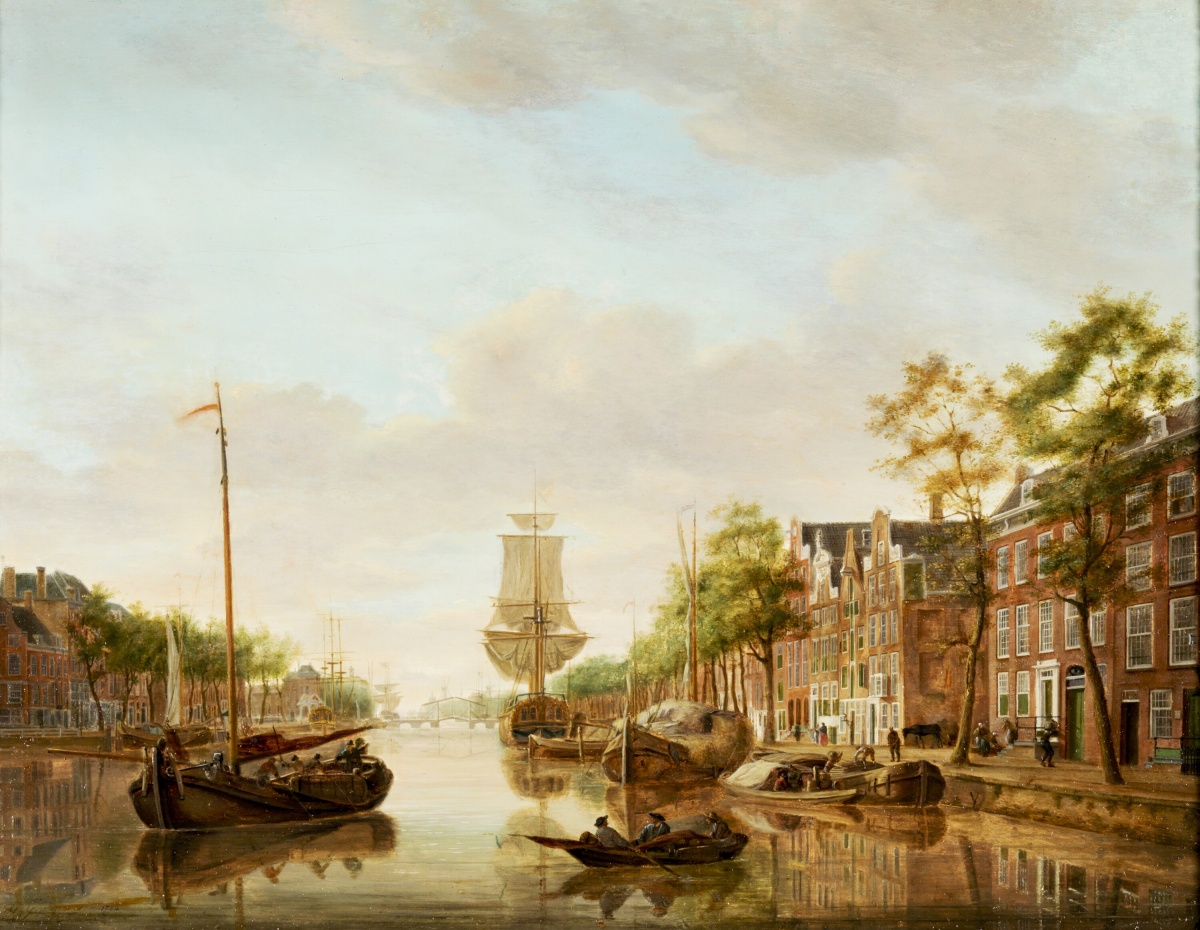
Leuvehaven
The Leuvehaven was the place to live for the wealthy Rotterdammers in the seventeenth and eighteenth centuries. At that time, large sailing ships are ready to depart for trade to Asia, Africa, the Caribbean or Brazil. Leuvehaven looking towards the Maas, painting by Gerrit Groenewegen, 1782. Collection Maritime Museum Rotterdam, object number P1157.
Mees: Wow…where are we now?
Jane: We are at Leuvehaven station, which is the harbor here in front of the museum. This harbor used to look very different, just look at the painting above the display case with the glasses. There are beautiful houses of rich people and there are large sailing ships that sail all over the world. They bring back sugar, coffee, spices such as pepper and nutmeg, cocoa and tobacco. These goods are kept in houses on this harbor where wealthy merchants live. Like the dignified gentlemen you see portraits of hanging.
Mees: Are they also going to Suriname? Isn't that where your mother comes from?
Jane: Yes, that's right, that's where my mother comes from! They also go to Suriname to buy sugar and tobacco. They want these products in Europe. It is grown on plantations where enslaved people from Africa work. Mees: Enslaved from Africa? So those are... Slaves……
Jane: That's right, they are slaves. But these people weren't born that way. They were captured during wars and then sold into slavery. That's why we call them enslaved.
Mees: That's really bad for those people! And how did those enslaved people get to the plantations?
Jane: See that ship model in the corner? Rotterdam merchants had these types of ships converted into slave ships. They bought the enslaved in Africa and brought them to Suriname, for example.
Mees: Look at the map above, Aunt Jane! It shows how full they packed such a ship. You can even see that they are tied up!
Jane: The journey was also terrible for the captured Africans. Many enslaved people died along the way due to disease and poor nutrition.
Mees: And if they did survive the journey, they had to work very hard on the plantations and they had no life! I learned that in history class at school.
Jane: That's right! And in Rotterdam money was made with this trade. By exploiting other people on the other side of the world. It happened not only in Suriname and Curaçao, but also in Asia.
Mees: Gosh... Now that I know this story... I look at those beautiful houses in that painting differently...
-
Startingpoint
-
Rotte
-
Leuvehaven
-
Feijenoord
-
Heijplaat
-
Pernis
-
Maasvlakte
-
Horizon